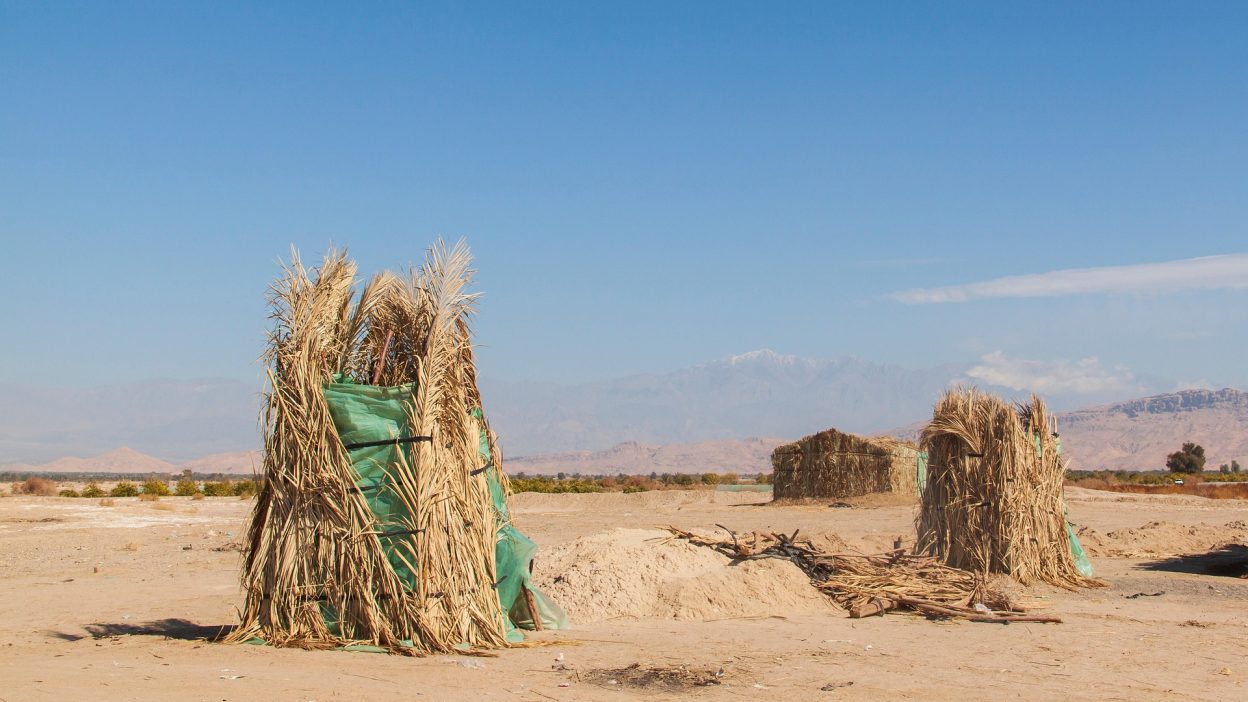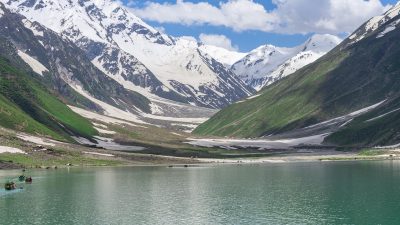The Forgotten Earthquake: How Balochistan’s 1945 Disaster Shook the Region
The 1945 Balochistan Earthquake, one of the deadliest seismic events in Current Pakistan’s history, left a significant yet largely unremembered impact on the region. While many major natural disasters capture the world’s attention, Balochistan’s quake often fades into obscurity. The tremors, which struck on 28 May 1945, claimed the lives of thousands and completely devastated towns and villages across the province. Yet, the disaster remains underreported in global history, overshadowed by other global events, and its lessons left unlearnt.
The earthquake not only caused widespread destruction but also exposed the vulnerability of Balochistan’s infrastructure and preparedness. Despite being located in a seismically active zone, little had been done to prepare the population for such a disaster. The lack of immediate assistance and the slow recovery process showed how neglectful governments, both local and central, were in responding to the needs of the region. The earthquake’s long-term effects were felt for years as Balochistan struggled to rebuild its shattered communities.
A Catastrophe Waiting to Happen: The Balochistan Earthquake and Its Unpredictability
- Seismic Activity in Balochistan: Balochistan lies in a highly active seismic zone, with frequent tremors shaking the region. However, the 1945 earthquake was unexpected in its magnitude and suddenness. Despite past seismic activity, there was no adequate preparation or early warning systems in place, which left the local population vulnerable to the catastrophic impact.
- Factors Leading to the Earthquake: The earthquake’s epicentre was located near the Makran coast, a region known for its tectonic activity. This is where the Arabian plate meets the Eurasian plate, making the area prone to major earthquakes. The 1945 earthquake was a result of this tectonic movement, which caused severe shaking and widespread destruction across the region.
- Unpreparedness and Lack of Response: The severity of the earthquake exposed the lack of preparedness in Balochistan and Pakistan as a whole. The country’s infrastructure was not designed to withstand such a massive earthquake, and there was little support from international relief agencies at the time. This lack of preparedness led to an inadequate response and prolonged recovery, leaving the people of Balochistan to fend for themselves in the aftermath.
The Devastation You Didn’t Know: Exploring the Aftermath of the 1945 Balochistan Earthquake
- The Destruction Caused by the Quake: The earthquake caused massive destruction in Balochistan. Entire towns were flattened, and infrastructure like roads, bridges, and buildings were destroyed. The quake’s aftershocks continued to ravage the area, making rescue efforts more difficult. Villages like Pasni and Gwadar were left in ruins, with thousands of people buried under debris.
- Impact on Balochistan’s Economy and Infrastructure: The earthquake had a profound impact on Balochistan’s economy. The destruction of infrastructure led to trade disruptions, agricultural losses, and economic hardship for the local population. The province, already underdeveloped, found itself in an even more precarious position, with resources directed at emergency relief and recovery rather than long-term development.
- How the Local Population Struggled to Recover: The recovery process was slow and difficult. The lack of government support, both locally and nationally, meant that the communities had to rely on their own resources to rebuild. Without access to modern technology and construction materials, rebuilding efforts were rudimentary and prolonged. Many survivors were left without adequate shelter and basic necessities, making recovery a drawn-out struggle.
Why Did This Earthquake Leave a Lasting Mark on Pakistan’s History?
The 1945 Balochistan Earthquake is often overshadowed by other global events, yet its consequences left a lasting mark on Pakistan’s history. While the quake did not receive as much media attention as other disasters, its social, political, and economic ramifications were deeply felt. The lack of a coordinated response and the inadequate relief efforts made it clear that Balochistan, and Pakistan as a whole, were not prepared to deal with natural disasters of such magnitude.
Furthermore, the aftermath of the earthquake exposed the government’s neglect of Balochistan’s infrastructure and welfare. The lack of long-term recovery plans and failure to rebuild vital infrastructure meant that the region continued to lag behind the rest of the country in terms of development. This negligence only added to the political unrest in the region, which would later fuel calls for greater autonomy and rights for Balochistan.
The Human Toll: Lives Lost and Families Destroyed by the Balochistan Quake
The human toll of the 1945 Balochistan Earthquake was devastating. Thousands of lives were lost in the quake, with entire families being wiped out. Those who survived were left with little more than the clothes on their backs. The emotional and psychological impact on survivors was also significant, as many had lost loved ones and their homes in a matter of seconds.
The earthquake not only caused physical destruction but also led to long-lasting emotional scars. Survivors faced grief, trauma, and the challenge of rebuilding their lives in the wake of such a devastating event. Despite their resilience, the mental health toll of the disaster remained largely unaddressed for many years, contributing to the long-term effects of the earthquake on the local population.
Balochistan 1945: An Earthquake That Should Have Taught Us More
The 1945 Balochistan Earthquake should have been a wake-up call for the world, a reminder of the need for better disaster preparedness in earthquake-prone regions. Despite the catastrophic loss of life and property, the lessons from this earthquake were not fully embraced. The lack of international response, along with Pakistan’s failure to develop proper infrastructure and response systems, meant that Balochistan was left vulnerable to future earthquakes.
Had the lessons of 1945 been heeded, Balochistan may have been better equipped to handle subsequent disasters. The neglect of proper building codes, early warning systems, and the absence of a coordinated disaster relief plan meant that Balochistan would continue to face similar challenges in the decades that followed. It is clear that the failure to learn from this event only made future tragedies more likely.
The Economic Impact: How the 1945 Earthquake Shattered Balochistan’s Future
The economic consequences of the 1945 earthquake were profound and long-lasting. The destruction of vital infrastructure crippled the region’s economy, making recovery difficult. The agricultural sector, a key part of Balochistan’s economy, was devastated, and local businesses were forced to shut down. The loss of life and resources left the region in a state of economic disarray, and recovery took years, if not decades.
In addition to the immediate economic losses, the earthquake’s aftermath hindered Balochistan’s long-term development. Without the resources to rebuild infrastructure and industry, the province fell further behind in terms of economic growth and opportunities. This economic disparity contributed to the political tensions that would later surface in the region.
Conclusion: Balochistan’s 1945 Earthquake: A Tragedy That Demands Reflection
The Balochistan Earthquake of 1945 is a tragic reminder of the destructive power of nature and the importance of preparedness. While the world moved on to other headlines, the people of Balochistan continued to suffer the consequences. The lessons from this disaster were not fully recognised, and the region paid a heavy price. Today, it is essential that we reflect on this catastrophe and ensure that future disasters are met with proper planning, response, and support for those affected.
FAQs
1. What caused the 1945 Balochistan Earthquake?
The 1945 Balochistan Earthquake was caused by tectonic activity along the Makran Coast, where the Arabian Plate meets the Eurasian Plate. This seismic movement resulted in a powerful earthquake.
2. How many people died in the 1945 Balochistan Earthquake?
The earthquake claimed thousands of lives, with estimates ranging from 4,000 to 10,000 fatalities, although exact numbers remain uncertain due to the remote location and lack of proper records.
3. How did the earthquake affect the local economy?
The earthquake caused widespread damage to infrastructure, disrupting trade and agriculture. The economy was severely affected, with the region’s long-term recovery hindered by the lack of resources and support.
4. Why is the 1945 earthquake not as well-known?
The 1945 earthquake was overshadowed by other global events, and the lack of media coverage and government attention led to it being largely forgotten in international history.
5. What lessons can be learned from the Balochistan Earthquake?
The key lessons include the importance of earthquake preparedness, early warning systems, and efficient disaster response plans to mitigate the effects of such catastrophes in the future.
References:
· “The 1945 Balochistan Earthquake and Probabilistic Tsunami Hazard Assessment for the Makran Subduction Zone”
https://ui.adsabs.harvard.edu/abs/2014EGUGA..1616675H/abstract
· “Tsunami Heights and Limits in 1945 Along the Makran Coast Estimated from Testimony Gathered 7 Decades Later in Gwadar, Pasni and Ormara”
https://nhess.copernicus.org/articles/21/3085/2021/
· “Earthquake and Tsunami of 28 November 1945 in Southern Pakistan”
https://drgeorgepc.com/Tsunami1945Pakistan.html
· “The Epicenter of the 28 November 1945 Earthquake that Generated Tsunamis off the Makran Coast of Pakistan and Iran”
https://www.researchgate.net/figure/The-epicenter-of-the-28-November-1945-earthquake-that-generated-tsunamis-off-the-Makran_fig4_301749042 · “1945 Balochistan Earthquake”
https://en.wikipedia.org/wiki/1945_Balochistan_earthquake




